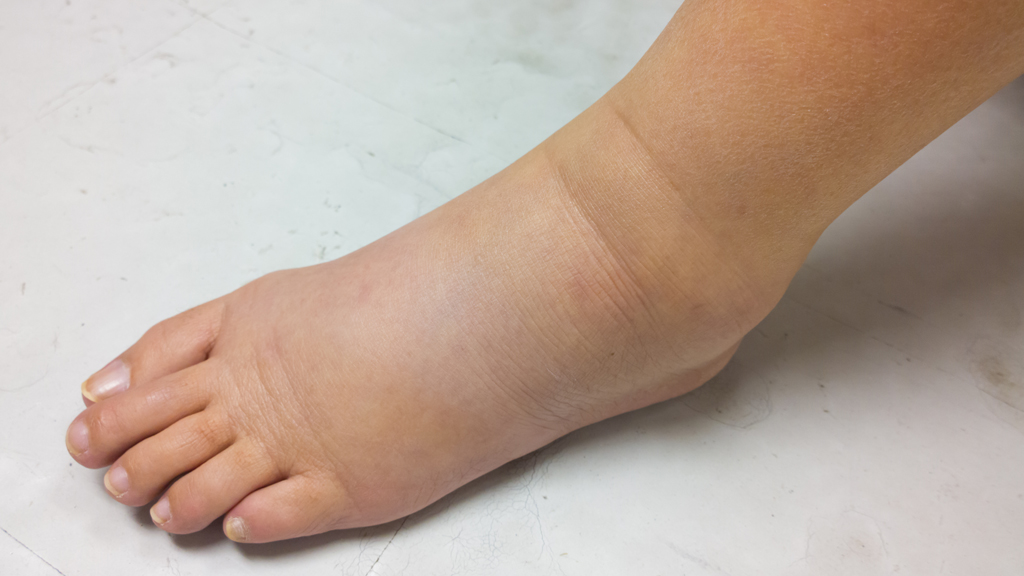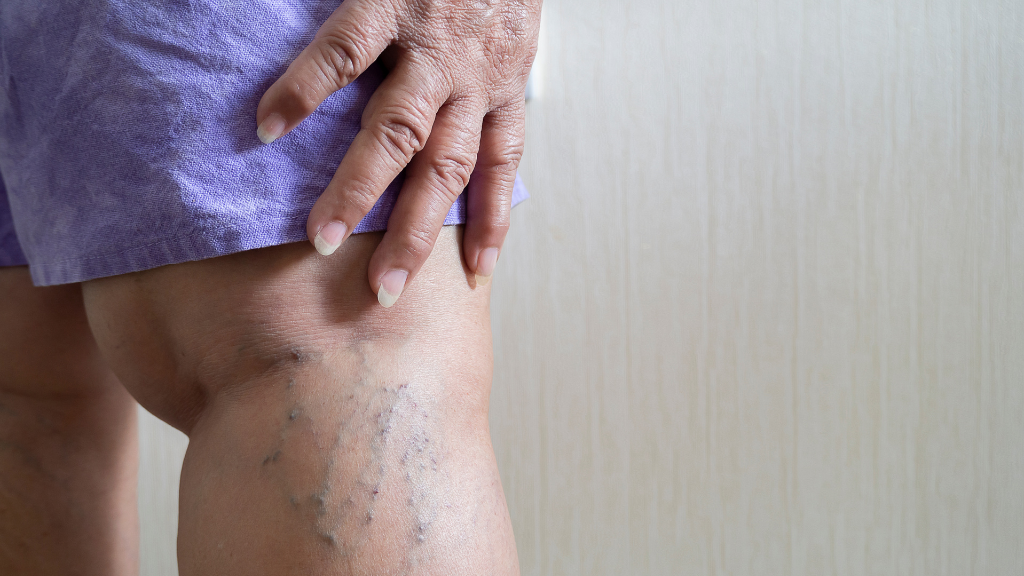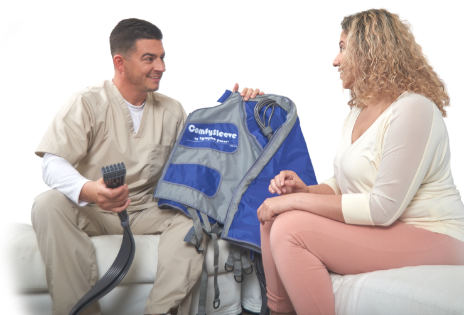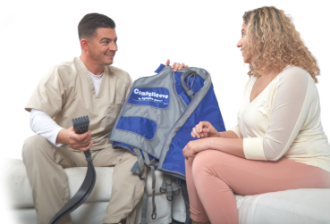A lymphatic pump is one of the best tools available for people who need in-home therapeutic options. Although compression pumps are commonly associated with treating lymphedema symptoms, they also benefit other related conditions.
Edema Control and Lymphedema Therapy
Generally speaking, edema is fluid retention and swelling, primarily in the body’s limbs. Edema can be caused by a number of conditions, and is one of the earliest and most persistent symptoms of lymphedema. In lymphedema, edema accumulates because the lymphatic vessels which remove this fluid and return it to the blood circulation are damaged or malformed, and so are unable to maintain a normal fluid flow.
Lymphedema can be uncomfortable and even painful. The swelling may make it difficult to perform everyday activities or wear your usual clothing and footwear. The swelling can increase, and fibrosis (hardening of the tissue) may occur. The swelling can also make you susceptible to cellulitis, an infection of the skin that requires urgent medical treatment. So it is important to manage and reduce lymphedema swelling. This is done with compression, and your first treatment may be a prescription compression garment. Your doctor may also recommend at-home use of a pneumatic compression pump and/or in-office treatment from a physical or occupational therapist specializing in lymphedema treatments such as manual lymphatic drainage and lymphatic bandaging. Your physician may also recommend lymphatic surgery that may be able to restore lymph drainage. .
Dr. D. Scott Covington, MD, FACS, CHWS, MED, is a surgeon specializing in wound care He recommends using a lymphatic pump as part of a five-step complete decongestive therapy (CDT) approach to managing lower extremity swelling that occurs with chronic edema. The pneumatic compression therapy pump uses an air-filled garment worn about the limb to apply external pressure in a special massage sequence. The pump’s intermittent compression and massage helps to compensate for the fluid management insufficiency in the affected body part.
According to Dr. Covington, the best way to use the pump for these conditions is for the patient to find time in their daily routine for two 20 minute daily sessions of pumping, unless otherwise instructed by their doctor.
Phlebolymphedema
Phlebolymphedema is a type of leg edema caused by chronic venous hypertension. . Edema fluid leaks out of swollen veins, overloading and damaging the lymphatic vessels, leading to lymphedema. Patients with phlebolymphedema often have wounds (chronic venous stasis ulcers).
Dr. Covington sees the benefits of using a pump to treat phlebolymphatic wounds and describes a pump as a “very helpful and wonderful tool” for this use. Edema in the leg prevents the wound from healing. A lymphatic pump can decongest and reduce the edema, improving the environment around the wound, which helps it heal more quickly and prevents recurrence.
Lymphedema Surgery
Dr. Jay Granzow, MD, MPH, FACS is an internationally recognized expert in surgical treatment of lymphedema and lipedema. He recommends lymphatic pumps to maintain volume reduction after surgery. He’s had patients who have had surgery, continue using pumps, reducing their reliance on compression garments, which often improves their mental outlook and quality of life.
In the period after lymphatic surgery, a lymphatic pump can continue to support patients’ recoveries and positive outcomes. Dr. Granzow encourages his patients to keep using compression garments plus pneumatic compression pumps as instructed.
This is all part of the post-surgical support structure that gives someone the best possible shot at keeping lymphedema symptoms to a minimum in the weeks, months, and years after surgery. Even a patient with severe damage to their lymphatic system can benefit from a comprehensive approach including a lymphatic pump, says Dr. Granzow.
Lymphostatic Fibrosis
Fibrosis is a replacement of normal tissue by collagen fibers, causing hardening of the tissue. One type of fibrosis is scar tissue. Other types of fibrosis can occur due to injury, radiation, and infection. Lymphostatic fibrosis is caused by the inflammation produced by edema under the skin, and increases with time if lymphedema is left untreated.
Karen Ashforth, OT MS CLT-LANA, is an occupational therapist specializing in treatment of lymphedema. She views lymphatic pumping as part of an essential early intervention strategy to decongest edema before fibrotic changes occur, as well as to reduce and remodel existing fibrosis to prevent further disruption of lymphatic drainage. .
.Ashforth has seen excellent results from use of compression pumps for lower extremity phlebolymphatic fibrosis. Phlebolymphedema is the most common form of lymphedema in the Western world and its resulting fibrosis is resistant to treatment. A lymphatic pump is a vital tool for restoring fluid flow and helping hardened areas begin to heal.
Ashforth encourages her patients to use a pump on their own at home. She explains, “I’m training my patients so that they can learn how to use the equipment independently. And I’m also getting a sense of whether this is someone that needs to use it once a day or more, whether they can tolerate an entire hour of treatment, or maybe if they have sensitive tissues or wounds, they might need to split their treatment into 30-minute chunks.”
After Breast Cancer Treatment
Fibrosis and lymphedema are known side effects of breast cancer treatment. Post-radiation, breast cancer patients often experience an issue known as cording, as well as fibrosis that limits arm and shoulder movement.
If you’re facing breast cancer treatment or have recently had radiation or other breast cancer therapies, ask your doctor about using a lymphatic pump. It may help improve your mobility and reduce pain and stiffness, as well as reducing edema, to support your recovery.
Lymphedema treatment for long-term therapy
Lymphedema and its related conditions are, for the most part, lifelong conditions requiring maintenance even after innovative treatments like lymphatic microsurgery. As you enter the maintenance phase of managing your condition, a lymphatic pump can support your ongoing health.
Using a pump can also be a very relaxing experience that helps you stay comfortable. When discussing compression pump therapy, Dr. Covington explains, “Most of my patients really like therapy and tell me that they fall asleep during therapy. It feels like a leg massage, so they’ll put the pumps on and take a nap.”
Dr. Covington says a pump is an important part of generating a clinical chain of support for a patient’s ongoing lymphedema treatment. Using a pump helps patients hit what he calls “the sweet spot” for therapeutic success, then stay in this sweet spot over the long term.
For More Information About Lymphatic Pumps
To learn more about pumps for edema, lymphedema, lipedema, and other conditions, please review lymphatic pump options from Lympha Press®. For more than 40 years, Lympha Press has provided innovative compression pump home therapy equipment that supports the best possible patient outcomes.








